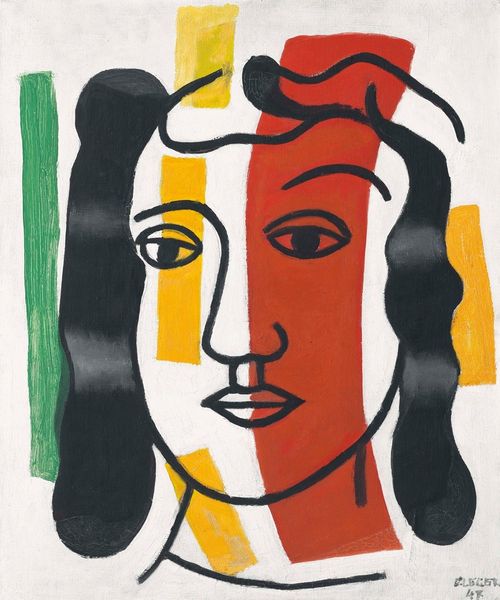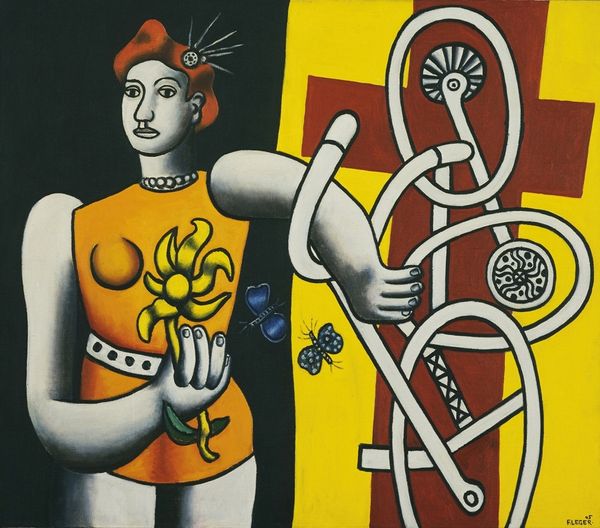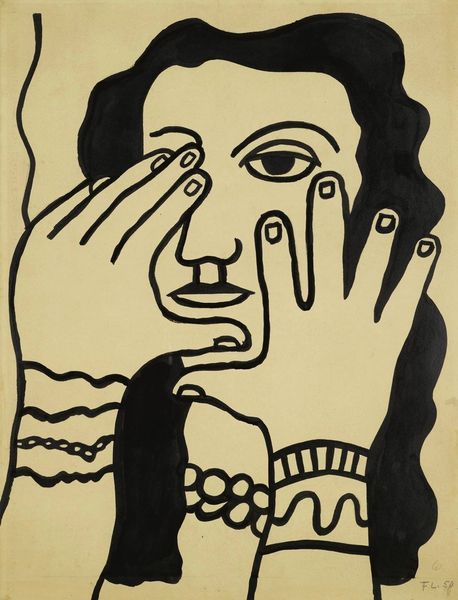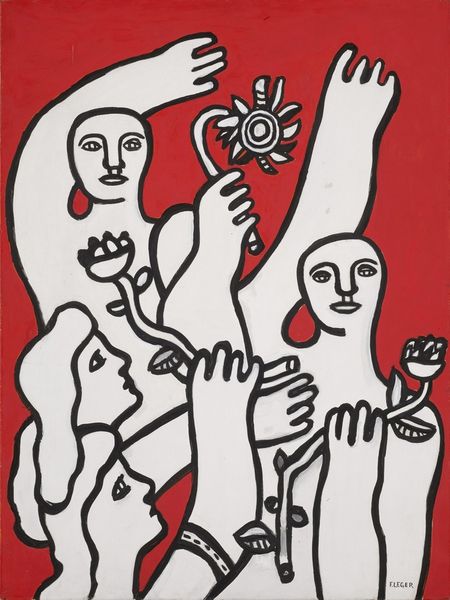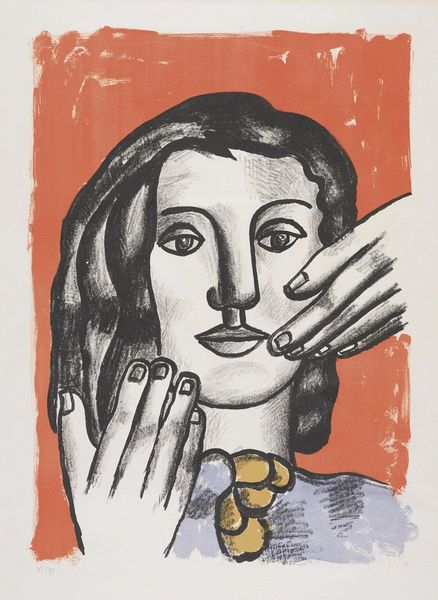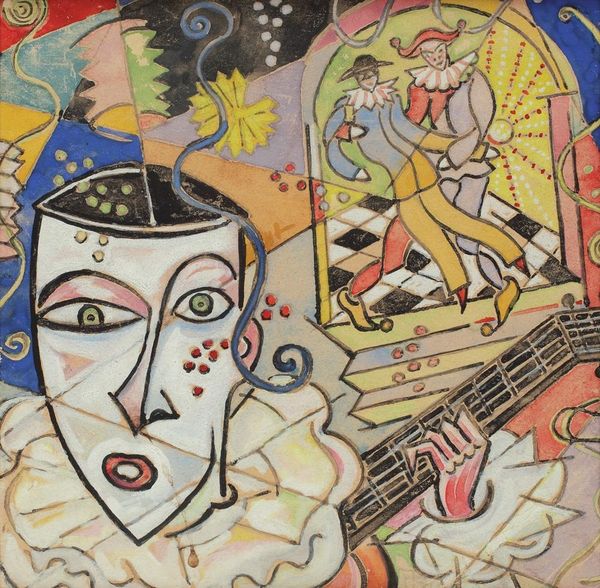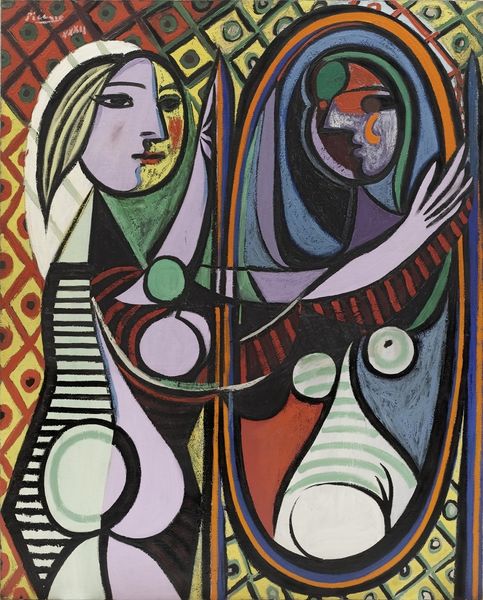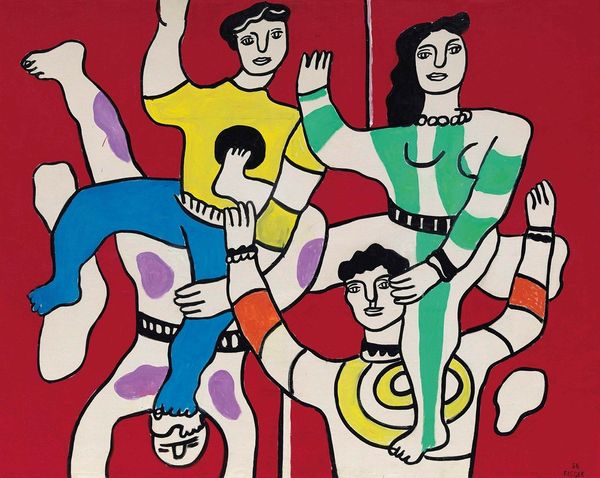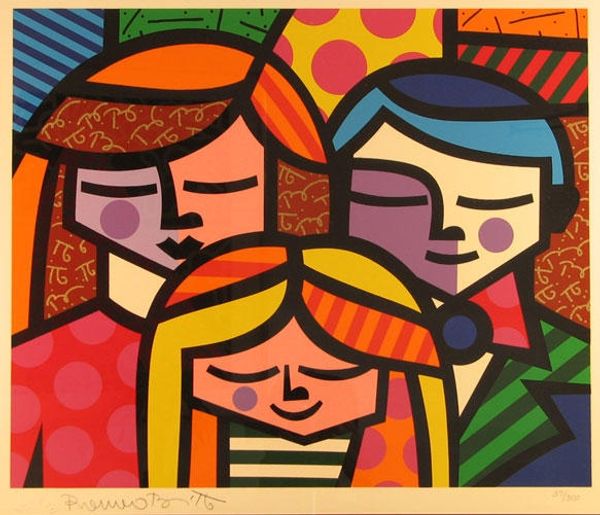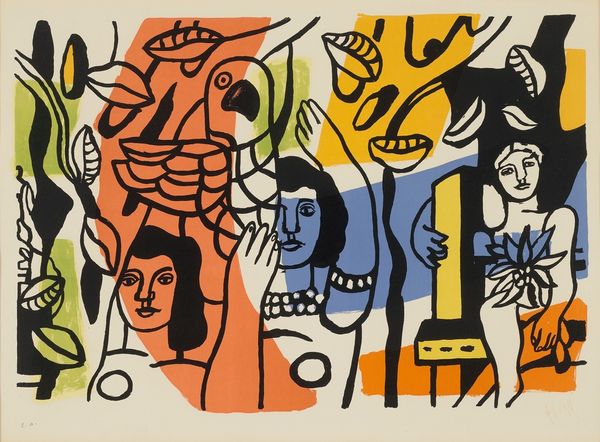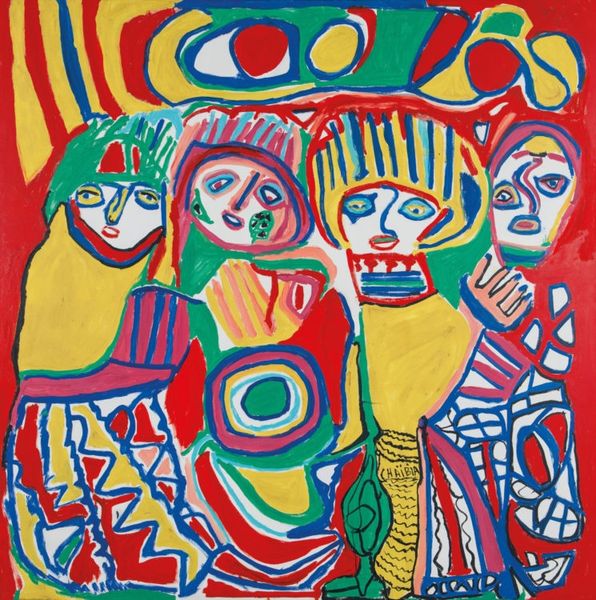
Copyright: Modern Artists: Artvee
Editor: This is "Deux figures et une fleur" or "Two Figures and a Flower" painted by Fernand Léger in 1949 using oil paint. The bold outlines and simplified forms give it a slightly flattened, graphic feel. What are your initial thoughts on it? Curator: Well, for me, this piece screams post-war industrial reconstruction. Léger, ever the materialist, consistently tried to connect art with the everyday worker. Consider the materials: oil paint, industrially produced, easily distributed. The subject – ordinary figures, almost like cogs in a machine alongside a flower. It’s less about the subjects' individual psychology and more about how we produce, consume, and interact. Notice how the flower is almost stylized, like a mass-produced item itself. Editor: So, you’re saying it's less about representation and more about Léger commenting on the processes of production? The people seem so stoic; their labor is all that matters? Curator: Exactly. The emphasis on the 'figure' isn't just to present the body but to showcase labor, construction, and even, in a way, commodification. Look at the bold lines. These are constructed, delineated forms, not free-flowing interpretations of human expression. He is, as ever, concerned with bringing art into conversation with all types of production, deconstructing established boundaries. Is the flower nature, art, or something manufactured for enjoyment? Editor: I see. It shifts my perspective completely, focusing less on emotion and more on how the work, itself a manufactured object, speaks to the culture of making. I'd never considered the socio-economic aspect before! Curator: These works help us explore social and artistic production and also how that relationship between artist and artwork may itself be conceived as labor. Editor: Thanks; I learned so much about deconstructing what is presented at first glance and going deeper into production.
Comments
No comments
Be the first to comment and join the conversation on the ultimate creative platform.
